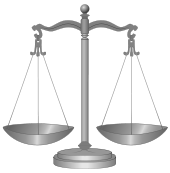- Real evidence
-

Evidence Part of the common law series Types of evidence Testimony · Documentary
Real (physical) · Digital
Exculpatory · Scientific
Demonstrative
Eyewitness identification
Genetic (DNA) · LiesRelevance Burden of proof · Laying a foundation
Public policy exclusions · Spoliation ·
Character · Habit · Similar factAuthentication Chain of custody
Judicial notice · Best evidence rule
Self-authenticating document
Ancient documentWitnesses Competence · Privilege
Direct examination
Cross-examination · Redirect
Impeachment · Recorded recollection
Expert witness · Dead Man's StatuteHearsay and exceptions in English law · in United States law
Confessions · Business records
Excited utterance · Dying declaration
Party admission · Ancient document
Declaration against interest
Present sense impression · Res gestae
Learned treatise · Implied assertionOther common law areas Contract · Tort · Property
Wills; trusts and estates
Criminal lawReal evidence, material evidence or physical evidence is any material object, introduced in a trial, intended to prove a fact in issue based on its demonstrable physical characteristics. Physical evidence can conceivably include all or part of any object.[1]
Contents
Examples
Examples include the written contract, the defective part or defective product, the murder weapon, the gloves used by an alleged murderer.
Trace evidence, such as fingerprints and firearm residue, is also a type of real evidence. Real evidence is usually reported upon by an expert witness with appropriate qualifications to give an opinion. This normally means a forensic scientist or one qualified in forensic engineering.
In a murder trial for example (or a civil trial for assault), the physical evidence might include biological evidence such as DNA left by the attacker on the victim's body, the body itself, the weapon used, pieces of carpet spattered with blood, or casts of footprints or tire prints found at the scene of the crime.
Provenance
Admission of real evidence requires authentication, demonstration of relevance, and a showing that the object is in “the same or substantially the same condition” now as it was on the relevant date. An object of real evidence is authenticated through witness statements or by circumstantial evidence called the chain of custody.
Physical and documentary evidence
Evidence that conveys in a different form the same information that would be conveyed by a piece of physical evidence is not itself physical evidence. For example, a diagram comparing a defective part to one that was properly made is documentary evidence—only the actual part, or a replica of the actual part, would be physical evidence. Similarly, a film of a murder taking place would not be physical evidence (unless it was introduced to show that the victims blood had splattered on the film), but documentary evidence (as with a written description of the event from an eyewitness).
See also
References
- ^ Jonathan Law, Elizabeth A. Martin (2009). "A Dictionary of Law". Oxford University Press. http://www.oxfordreference.com/views/ENTRY.html?subview=Main&entry=t49.e3234. Retrieved 20 September 2010.
Categories:- Evidence law
- Forensic evidence
- Law stubs
Wikimedia Foundation. 2010.
